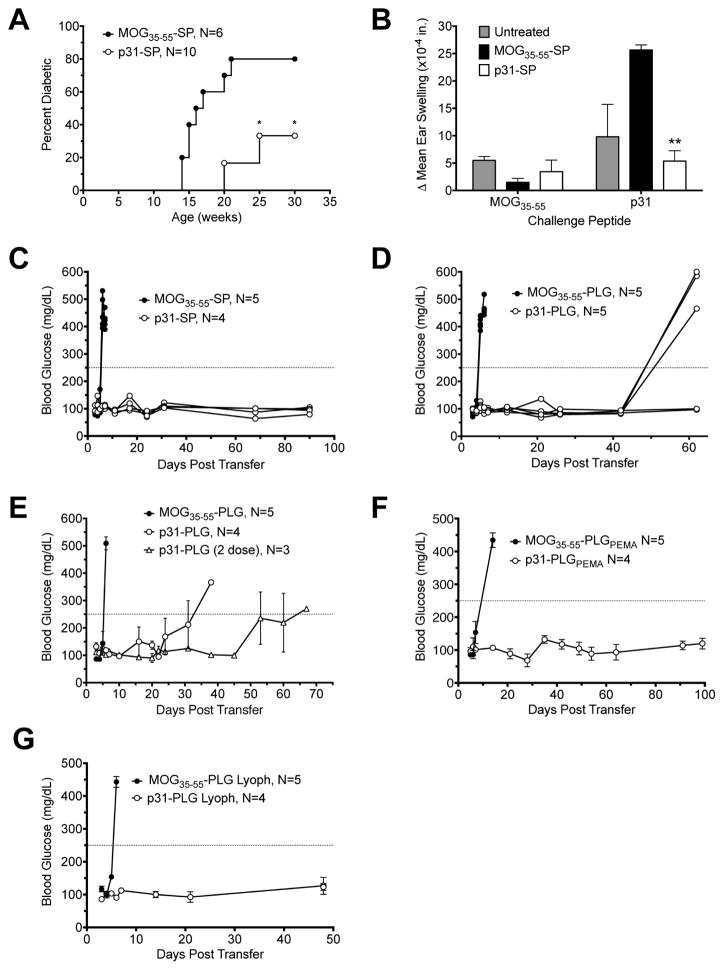Fig. 1. Treatment with p31-SP or p31-coupled PLG/PEMA nanoparticles prevents/delays onset of hyperglycemia in spontaneous T1D in NOD mice and in the BDC2.5 transfer model of T1D.
(A) Wildtype NOD mice were treated with p31-SP at 5 weeks of age. Percentage of spontaneous diabetes in p31-SP treated mice is compared to the control MOG35–55-SP treated mice. (B) Ear swelling, as a measure of DTH, was measured 24 h after ear challenge with the p31 and MOG35–55 peptides in treated and untreated NOD mice at 31 weeks of age. (C–G) Diabetes was induced by the adoptive transfer of 5×106 p31 mimetope peptide-activated MHC II-restricted transgenic BDC2.5 T cells into NOD.SCID recipients. Mice were treated at day 0 or 1 post transfer by i.v. infusion of p31-SP (C), p31-coupled PLG nanoparticles (D), p31-PLG nanoparticles with a 2nd dose administered at day 20 post transfer (E), p31-coupled PLG/PEMA nanoparticles (F), or by i.v. infusion of freshly prepared vs. lyophilized p31-coupled PLG nanoparticles (p31-PLG) (G). Individual (C,D,G) or grouped (E–F) recipient blood glucose measurements are shown. Data in each panel is representative of 2–5 individual experiments. *p<0.05, **p<0.01 vs. MOG35–55 control peptide tolerized mice.

